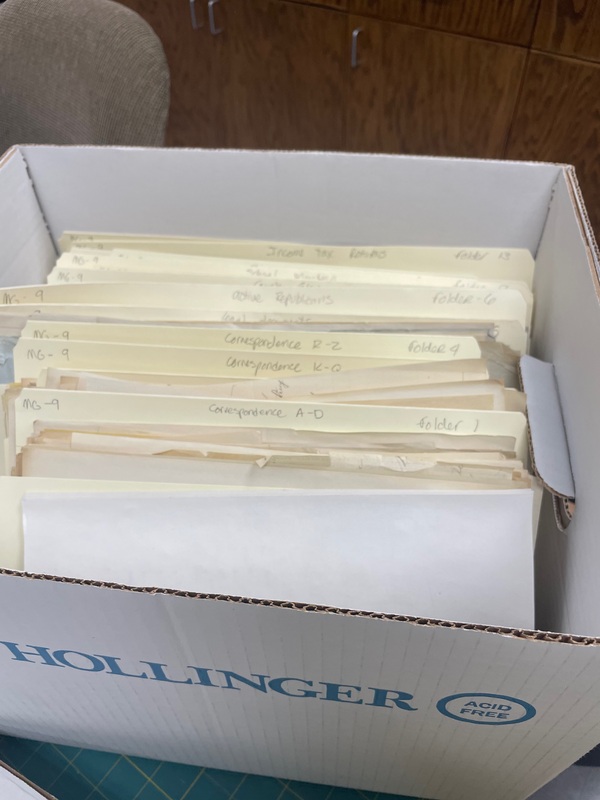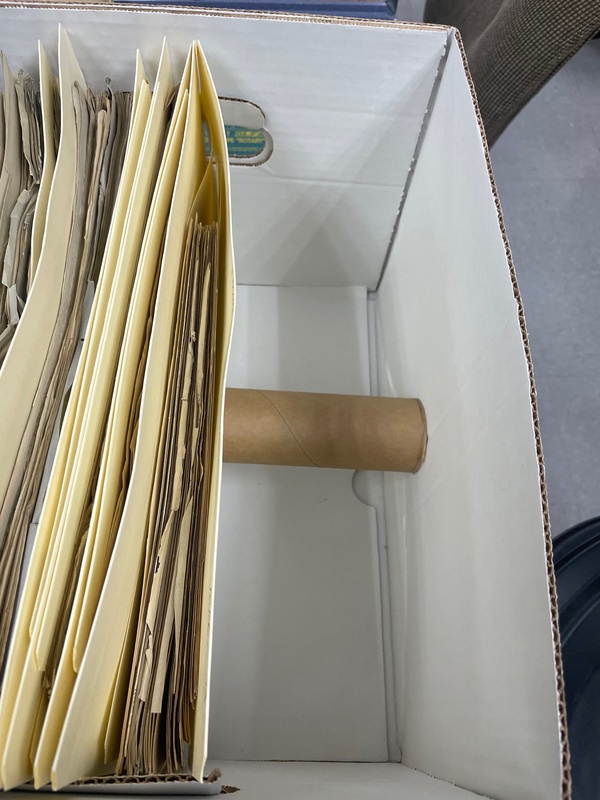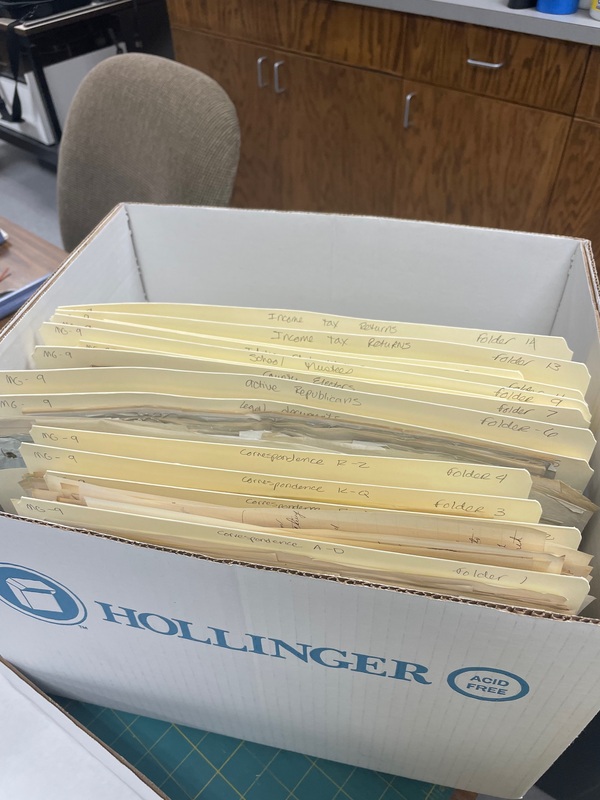When archival collections are donated to us, they are received in various levels of order or disarray. Our job is to rehouse the materials into safe storage containers, organize them, and then describe them, so researchers can find what they are looking for. Often the rehousing process can lead to a lot of waste, as we discard folders and boxes that release acid and gases as they age which can damage the materials they contain. The archival collections are transferred to acid-free boxes and folders in preparation for future researchers. It is also important that those rehoused materials are in boxes that fit the materials. If there is a lot of open space in a box, folders will slouch ultimately damaging the documents by bending them. But what do you do when the materials are too many for a small box, but too large for a bigger box? Well…you fix it!
There are many ways to make sure materials are standing straight in a box too large. In many cases (including here), archives reuse some of the materials removed from collections as box fillers. In the past, we’ve used hard plastic slide holders to fill in extra space, we’ve used cut up box lids, and even fashioned our own spacers using cardboard. Recently, however, we came across some cardboard tubes. These tubes once held posters from our jazz collections that were recently unrolled through humidification. Check out my previous post Unrolling in the Deep to learn more about that process. After the humidifying processes we were left with approximately 40 cardboard tubes. It didn’t feel right to just throw them out, it seemed like there had to be another use for them. Well, I found it, they are wonderful box fillers. They just needed a little alteration.
After cutting off a small section of one of the tubes, I was able to use it as a support for our folders. And a collection that used to slouch, damaging documents, now stands tall and ready for any researcher who may need to utilize it. One tube can probably support 3-4 collections after being cut up (if not more). That being the case, the 40 tubes we now have stored and ready for use should last us a good long while helping us keep our collections in the best possible condition we can.





